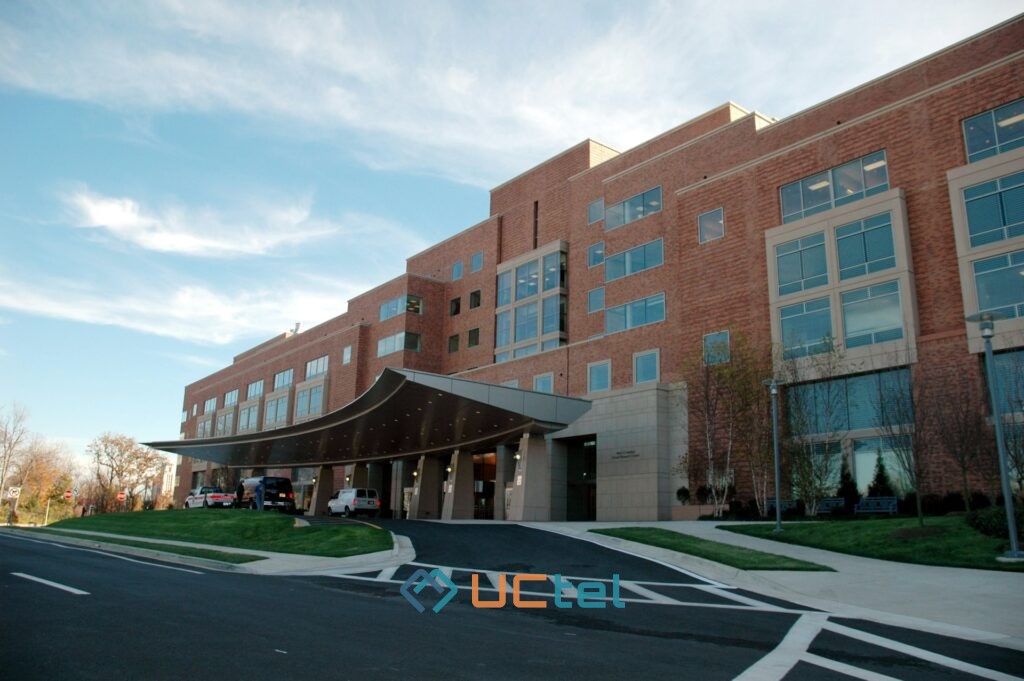Best Signal Boosters for Hospitals In The UK: Compliance, Cost, and Performance Guide

Table of contents
- 1. Follow-Up Questions
- 2. Why Hospital Connectivity Matters: Impact on Staff, Patients & Workflows
- 3. Understanding Ofcom Regulations and Exemptions for Healthcare Signal Boosters
- 4. Technical Comparison of Top Boosters for Hospitals
- 5. Hospital Case Studies: Real‑World Installation Outcomes
- 6. How Much Does it Cost? Budgeting and ROI Analysis
- 7. Installation Steps Your Hospital Should Expect
- 8. Frequently Asked Questions
Updated July 2025
Reliable mobile coverage is critical in hospitals to support clinical workflows, patient communication, and operational efficiency. This guide compares leading signal booster systems for UK healthcare facilities, explains Ofcom compliance, and outlines budgeting considerations to help decision-makers plan effective deployments.
Follow-Up Questions
Why is mobile connectivity so important in hospitals?
- Clinicians need access to patient records, immediate coordination, and emergency communication.
- For patients and visitors, reliable coverage improves comfort, access to support networks, and receipt of critical alerts.
What Ofcom regulations apply to hospital signal boosters?
- Ofcom requires mobile repeaters to be licence-exempt devices meeting strict standards or installed under licence.
- Hospitals typically rely on enterprise-grade systems like Cel‑Fi Quatra, which are compliant when installed by professionals.
Which boosters perform best in large hospital buildings?
- Cel‑Fi Quatra EVO: Scalable, multi-storey coverage.
- Cel‑Fi GO G51: Compact, ideal for smaller zones.
- Nikrans NS‑600FLG: Budget-friendly solution for medium-sized areas.
Are there real-world examples of improved coverage in hospitals?
- NHS Trusts have reported 90%+ improvement in EE and Vodafone coverage after phased Cel‑Fi Quatra deployments.
- These installations markedly improved call quality and data speeds.
How much should hospitals budget for signal booster installations?
- Costs range from £10,000 for small installations to £75,000+ for large-scale systems.
- ROI comes through productivity gains, fewer delays, and improved patient satisfaction.
What are the installation steps hospitals can expect?
- A typical deployment includes:
- Site survey
- Design planning
- Ofcom compliance documentation
- Phased installation
- System testing
- Professional installers like UCTel work with IT and estates to minimise disruption.
What should be on a compliance checklist?
- Ensure equipment meets Ofcom specifications
- Maintain documented installation plans
- Notify mobile operators if required
- Complete commissioning and performance testing
Why Hospital Connectivity Matters: Impact on Staff, Patients & Workflows
Hospitals rely on mobile communication for both clinical and administrative functions. Doctors and nurses need instant access to colleagues, especially during emergencies. Poor coverage can delay care and negatively impact patient outcomes.
Visitors and patients also benefit from reliable connectivity—for making calls, receiving appointment reminders, and accessing online services. Studies show that weak signal quality reduces operational efficiency and overall satisfaction levels.
Older NHS facilities, thick walls, and below-ground locations often cause coverage gaps. Deploying enterprise-grade boosters addresses these issues, distributing strong and consistent signals across the premises. UCTel has helped clients reduce dropped calls and improve call reliability, ensuring systems are compliant with UK regulations.
Understanding Ofcom Regulations and Exemptions for Healthcare Signal Boosters
In the UK, Ofcom regulates mobile repeaters to prevent interference. Hospitals must choose equipment compliant with the Wireless Telegraphy (Mobile Repeater) Regulations or secure a licence.
Devices like Cel‑Fi Quatra are licence-exempt if they meet power limits, interference protections, and other criteria. Installers must also provide compliance documentation and coordinate with operators when required.
UCTel’s process includes:
- Detailed design planning
- Regulatory checks
- Formal commissioning
This ensures installations are lawful and do not disrupt public networks. Facilities should confirm legal status and engage experienced providers familiar with Ofcom requirements.
Technical Comparison of Top Boosters for Hospitals
Selecting the right system depends on building size, coverage goals, and budget. Commonly used options include:
- Cel‑Fi Quatra EVO: Enterprise DAS hybrid with up to 100 dB gain, ideal for large, multi-storey buildings with multi-operator support.
- Cel‑Fi GO G51: Compact repeater with modular design and up to 100 dB gain, suitable for smaller zones.
- Nikrans NS‑600FLG: Cost-effective for medium-sized areas; supports fewer operators and slightly less gain.
When comparing solutions, consider:
- Scalability for future needs
- Compatibility with EE, O2, Vodafone, Three
- Ease of maintenance
- UCTel’s site surveys help match configurations to each facility
Hospital Case Studies: Real‑World Installation Outcomes
Professional installations bring measurable improvements:
- At an NHS Trust hospital in Manchester, UCTel designed and implemented a Cel‑Fi Quatra system across three floors. The phased installation took six weeks and produced a lasting 90%+ improvement in call stability and data speeds.
- In Birmingham, a private healthcare clinic used Nikrans boosters to fill signal gaps in treatment rooms and underground areas—achieving compliance and results within budget.
These examples underscore the value of tailored designs and compliance‑aligned planning.
How Much Does it Cost? Budgeting and ROI Analysis
Costs vary based on building size, complexity, and network needs. Estimates include:
- £10,000–£15,000 for smaller installations
- £75,000+ for large hospital systems with numerous antennas
Budgets should also cover:
- Site surveys
- Compliance documentation
- Ongoing maintenance
ROI drivers:
- Faster clinician communication
- Fewer care delays
- Improved staff productivity
- Increased patient satisfaction
ROI is often realised in 12–24 months thanks to operational efficiencies.
Installation Steps Your Hospital Should Expect
A structured process includes:
- Site Survey – Evaluate coverage levels, interference, and structural layout
- System Design – Plan booster units and antenna placement
- Compliance Documentation – Prepare Ofcom-required records and approvals
- Installation – Use phased deployment to minimise operational impact
- Commissioning & Testing – Validate signal performance and compliance
- Support – Ongoing monitoring and maintenance
UCTel works closely with hospital IT and estates teams to ensure seamless integration and reliable performance.
Frequently Asked Questions
What is a mobile signal booster for hospitals?
- A device that amplifies weak external mobile signals and redistributes them indoors via donor and internal antennas, improving coverage and data speeds.
Is it legal to install a signal booster in a UK hospital?
- Yes—if the booster is Ofcom-compliant, licence-exempt (e.g. Cel‑Fi Quatra), or installed under a licence. Professional setup and documentation are mandatory.
How much does it cost to install a booster system in a hospital?
- Small clinics start around £10,000, while large hospitals with multi-operator systems can exceed £75,000, depending on coverage requirements.
How long does installation take?
- Typically 4–8 weeks including surveys, design, regulatory steps, installation, and testing. Larger hospitals may need phased rollouts over several months.
Which brands or models are recommended for hospitals?
- Cel‑Fi Quatra EVO – scalable for large buildings
- Cel‑Fi GO G51 – ideal for single zones
- Nikrans NS‑600FLG – budget-friendly for medium areas
Will a booster work with all UK mobile networks?
- Yes—most enterprise systems support EE, O2, Vodafone, and Three. Confirm multi‑operator support during design.
What are the main benefits of installing a signal booster?
- Installations yield:
- Reliable staff communication
- Faster access to patient data
- Fewer dropped calls
- Better operational efficiency
- Higher patient satisfaction
What happens if we install a non-compliant booster?
- Use of non-compliant equipment can cause network interference, fines, legal action, and forced removal.
Do we need to notify mobile operators?
- Yes—especially for large or multi-operator systems. Professional installers coordinate with operators to ensure compliance.
How do we maintain the booster system over time?
- Maintenance includes:
- Regular performance audits
- Firmware updates
- Support contracts This keeps the system compliant and fully operational.
CONCLUSION – TL;DR
- Mobile connectivity is essential for hospital staff and patient workflows.
- Ofcom compliance is mandatory—use licence-exempt or licensed systems.
- Cel‑Fi Quatra EVO, GO G51, and Nikrans NS‑600FLG are top choices.
- Costs range from £10k to £75k+, with ROI often in two years.
- Following a structured installation, hospitals gain lasting benefits and efficient operations.





